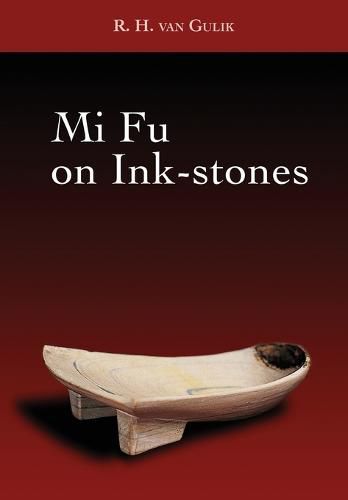Readings Newsletter
Become a Readings Member to make your shopping experience even easier.
Sign in or sign up for free!
You’re not far away from qualifying for FREE standard shipping within Australia
You’ve qualified for FREE standard shipping within Australia
The cart is loading…






This title is printed to order. This book may have been self-published. If so, we cannot guarantee the quality of the content. In the main most books will have gone through the editing process however some may not. We therefore suggest that you be aware of this before ordering this book. If in doubt check either the author or publisher’s details as we are unable to accept any returns unless they are faulty. Please contact us if you have any questions.
The great Song Dynasty poet and artist, Mi Fu (1051-1107), entered official life as secretary of the Board of Rites and Court painter. He founded a school of painting characterized by its bold and vigorous brushwork, and yet delicate in the composition of its exquisite landscapes.
Besides writing poetry, critical essays and colophons, Mi Fu left important treatises on painting and calligraphy, in addition to the present work on ink-stones, translated here by the eminent Dutch diplomat and Sinologist, Dr R. H. van Gulik. In the case of the first two works, the subjects of Mi Fu’s deliberations have long since disappeared. There remain, however, numerous surviving examples of ink-stones from the Song and earlier dynasties, enabling us to compare Mi Fu’s words with the actual objects he describes.
The importance of the ink-stone as an essential tool of the Chinese Literati–and thus the importance of our understanding of its nature to our overall comprehension of Chinese brushwork–is but one aspect of the present work. The ink-stone is, in addition to a tool, a work of art in its own right, combining the skill and wit of the sculptor with the ancient Chinese tradition of appreciation of beautiful stones. In this translation of Mi Fu on Ink-stones, Dr van Gulik provides not only a guide to the connoisseurship of this essential treasure of the scholar’s studio, but also an illuminating glimpse into the mind of this brilliant eleventh century artist.
$9.00 standard shipping within Australia
FREE standard shipping within Australia for orders over $100.00
Express & International shipping calculated at checkout
This title is printed to order. This book may have been self-published. If so, we cannot guarantee the quality of the content. In the main most books will have gone through the editing process however some may not. We therefore suggest that you be aware of this before ordering this book. If in doubt check either the author or publisher’s details as we are unable to accept any returns unless they are faulty. Please contact us if you have any questions.
The great Song Dynasty poet and artist, Mi Fu (1051-1107), entered official life as secretary of the Board of Rites and Court painter. He founded a school of painting characterized by its bold and vigorous brushwork, and yet delicate in the composition of its exquisite landscapes.
Besides writing poetry, critical essays and colophons, Mi Fu left important treatises on painting and calligraphy, in addition to the present work on ink-stones, translated here by the eminent Dutch diplomat and Sinologist, Dr R. H. van Gulik. In the case of the first two works, the subjects of Mi Fu’s deliberations have long since disappeared. There remain, however, numerous surviving examples of ink-stones from the Song and earlier dynasties, enabling us to compare Mi Fu’s words with the actual objects he describes.
The importance of the ink-stone as an essential tool of the Chinese Literati–and thus the importance of our understanding of its nature to our overall comprehension of Chinese brushwork–is but one aspect of the present work. The ink-stone is, in addition to a tool, a work of art in its own right, combining the skill and wit of the sculptor with the ancient Chinese tradition of appreciation of beautiful stones. In this translation of Mi Fu on Ink-stones, Dr van Gulik provides not only a guide to the connoisseurship of this essential treasure of the scholar’s studio, but also an illuminating glimpse into the mind of this brilliant eleventh century artist.